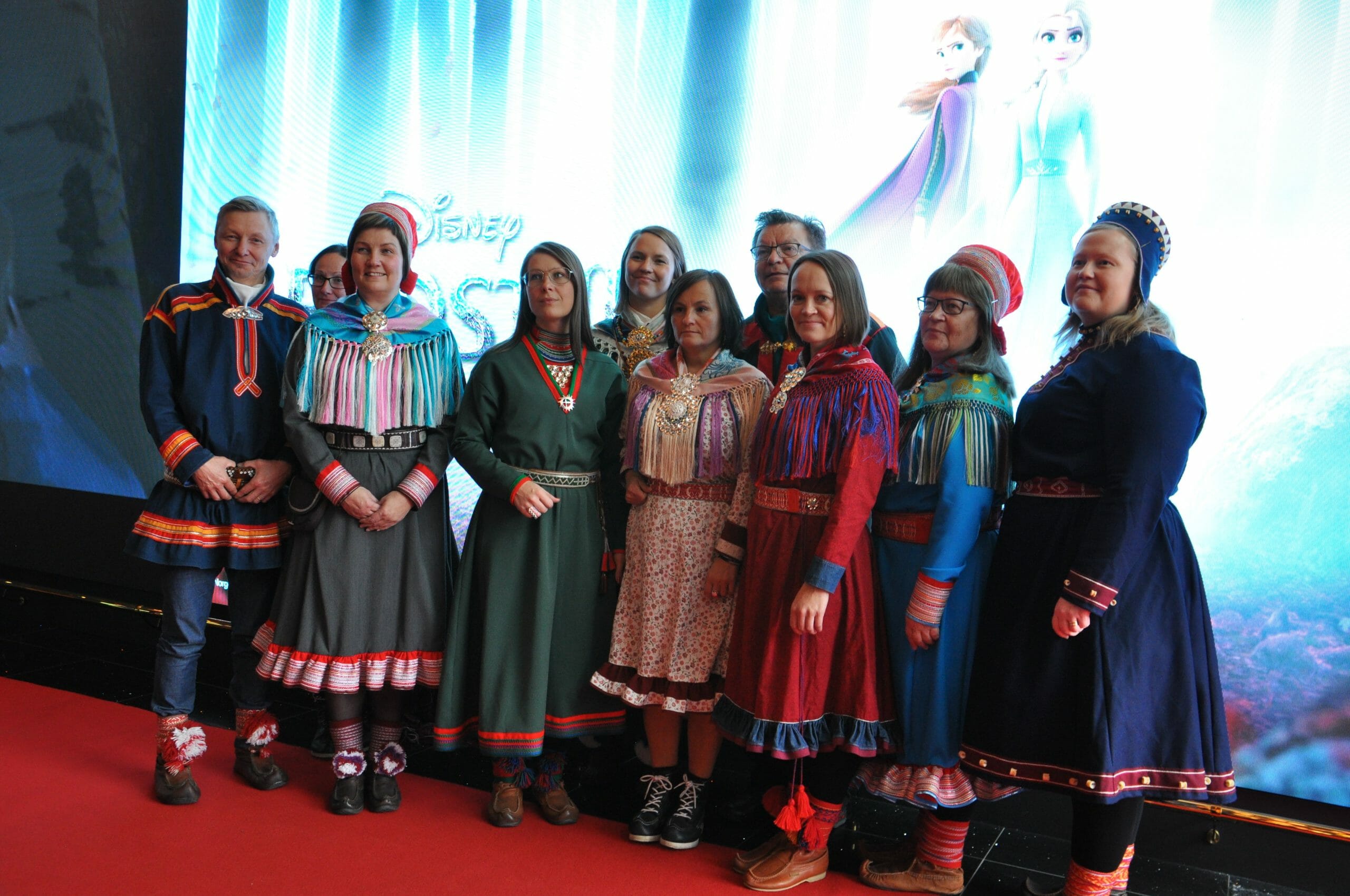
There is a long history of the film and television industries appropriating Indigenous stories and narratives. This appropriation has exerted a great deal of influence on the lives of Indigenous Peoples around the world. The single story told by many seems to be “The settler hero, a mythical animal, a shaman, and the Indigenous woman who falls in love with the settler hero.” This storyline-or something similar-appears in the films Pocahontas and Dances With Wolves, and in the television series Midnight Sun—among others.
Indigenous Peoples have never had the power of defining ourselves in film and television. It has always been the outside content producers who have had the resources and career possibilities to tell our stories; and they have either romanticized us, or created images that are stereotypical: the ‘single story’ of Indigenous Peoples. The power of definition follows the money and when we Indigenous Peoples don’t have our own strong financing bodies for film and television-invested parties that could support our own storytelling— the stigma created by misrepresentation can continue. We can never become anything else beyond the colonial and stereotypical definition of us as ‘mysterious and exotic’, if we don’t get to tell our own stories.
When I heard that the filmmakers for Frozen II were visiting Sápmi in 2016, I thought: “Ok here we go again…” They met with various Sámi representatives and traveled around many different areas in Sápmi. At the time, I was interviewed by NRK Sápmi, a unit of the Norwegian Broadcasting Corporation that produces Sámi-language news and other programs for broadcast via radio, television, and internet, and I said that we expected Disney would give something back to our people if they wanted to use our culture as inspiration. At the very least, we expected a Sámi dubbed version of the film. To be honest, I thought this would never happen.
The Sámi Parliaments and the Saami Council also learned that the Frozen II filmmakers had
visited Sápmi, so they wrote a joint letter to the Walt Disney Company and the film’s producer Peter Del Vecho inviting them to collaborate with us. The letter emphasized the principle of free prior and informed consent and that the film should be culturally sensitive and appropriate to Sámi culture. They also invited Disney to come back to Sápmi for a meeting. Peter Del Vecho accepted the invitation and he and the filmmakers returned.
This was the beginning of something that sounds like an unbelievable fairytale; not only the story that became the film in the end but also the story of the collaboration between the film’s creators and the Sámi people. The Sámi Parliament in Norway brought together a Sámi advisory group, called “Verddet”, tasked to work closely with the filmmakers. I was one of the people invited to join this group.
The first meeting between Verddet and Walt Disney Animation Studios (WDAS) was in Oslo. We discussed the Sámi inspiration of the film and it became very clear to us that the story was much more inspired by our culture than we had expected. This raised many challenging questions for us in the Sámi advisory group. For example: did we have the mandate from our people to allow the filmmakers to use specific elements of our culture? After much consideration, we concluded that since the story was so heavily inspired by our culture and WDAS had also entered a very good agreement with our people, we would allow the filmmakers to use culturally specific elements in the story, such as the appearance of the clothing and artifacts, and the concept of the spiritual connection to nature.
The collaboration continued very closely between Verddet and the filmmakers through spring 2019 and we went to visit the Walt Disney Animation Studios in April of that year. The WDAS is located in Burbank, Los Angeles a long journey for us from Sápmi in the arctic. At this point, the filmmakers presented a rough cut of the film to us. We discussed some of the “Northuldra” (characters in Frozen II modelled after Sámi) elements in the story, and we all felt good about the film. We also met the animators, who were working on the film and had detailed discussions with them about clothing and other aesthetic considerations. To meet the animators and all the filmmakers of Frozen II and see their dedication and expertise on artwork for the film was fascinating and inspiring.
One might think that a giant company like WDAS is all about commercial interests, but our impression, when working so closely with the filmmakers, was that for them it was all about the story. They were world-class storytellers, and the story was always at the centre of their work. The Verddet group found that the collaboration with the creators of Frozen II was truly respectful and professional and the filmmakers always went as far as they could to follow our advice. We felt that they truly wanted to be respectful to Sámi culture and this set a very good foundation of trust for a good collaboration.
The agreement between WDAS and the Sámi people represents an important change for the Sámi and Indigenous film & TV world. This seems like a hopeful step for respectful collaboration between producers (both large and small) and Indigenous Peoples in the future.
As part of the agreement, WDAS dubbed the film to North Sámi language, and the subsequent premiere of this version in all the Sámi regions was filled with small, Sámi Elsa & Anna princesses. One mother told us later that her daughter now thought that she could choose the Sámi language option for all other films: “Just choose the Sámi language on the film, mom!” This little girl’s new understanding is somewhat bittersweet. Frozen II is one of only two feature films that are dubbed to our language; but hopefully, this collaboration sets an example even for dubbing existing film and television content to Indigenous languages.
The successful collaboration with WDAS came together through the hard work of so many Sámi people, the Sámi political leaders, the Verddet group, the Sámi dubbing team and many more. And even though it was challenging at times, this is something we can truly be proud of.


Anne Lajla Utsi
Anne Lajla Utsi belongs to the Sámi people and lives in Kautokeino in Norwaŧ, where she has served as managing director for the International Sámi Film Institute (ISFI) since 2009.
She was one of the founders of the Institute and has a background as a documentary film director. Utsi has through the ISFI guided a new generation of Sámi filmmakers. The International Sámi Film Institute represents a watershed in Sámi film production and the production has increased 46 % in this period, 77 % women directors and producers.
ISFI has initiated the establishment of Arctic Indigenous Film fund, where Utsi is also a member of the board.
Utsi has been working in the film and media industry for 25 years as a film director, film festival manager, journalist and producer. She is a member of the Sámi media program council and has served as an advisor for Walt Disney Animation Studios, in the Sámi cultural expert group working with the filmmakers of Frozen II. She is also a member of the Sámi think tank “Jurddabeassi” organized by the Sámi Council. She a member of The European Film Academy and has also been a Native film advisor for the Berlin Film Festival. Utsi has served on international and national film juries and as mentor in various film labs and workshops. She has built a strong International film network with partners such as the Sundance Film Institute, Canada Media Fund, European Film Academy, Berlin Film Festival, Maoriland Film Hub and many more.